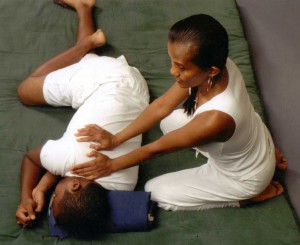 Hilot is a Filipino word that is interchangeably used to refer to a healing art that involves body work and energetic work, as well as the healer who comes from a lineage of hilot practitioners. A hilot session begins with a salutation to honor the diwata (forces in nature) and ninuno (ancestors) operating in kaluwalhatian (peace). Thanks is offered for empowering the practitioner with the tradition that she may humbly assist in creating harmony in the client’s whole being (body-mind-spirit-emotions).
Hilot is a Filipino word that is interchangeably used to refer to a healing art that involves body work and energetic work, as well as the healer who comes from a lineage of hilot practitioners. A hilot session begins with a salutation to honor the diwata (forces in nature) and ninuno (ancestors) operating in kaluwalhatian (peace). Thanks is offered for empowering the practitioner with the tradition that she may humbly assist in creating harmony in the client’s whole being (body-mind-spirit-emotions).
After the salutation and centering, the practitioner and client proceed with yoga-like stretches. This is important and not to be ignored as it increases the benefits of the massage. They then continue the massage with gentle kneading with special emphasis on key pressure points and combine this with several breathing regimens. This enhances the effects of the massage for immediate relaxation, flexibility, and feeling good. Each motion is sensitively tailored and customized to the person’s needs, which unfold in the process of the session.
Hilot is helpful for a variety of conditions, as mentioned here, but is not limited to this list. Historically, hilot is most commonly used to maintain women’s health and wellness and to prepare women for pregnancy. It has also benefited recovering stroke patients and children with post-cerebral palsy. These conditions warrant a series of sessions to achieve the desired outcomes.
Please remember at the session that healing has just begun. During hilot, the dance exists with diwata, hilot and the client. It is like weaving a unique pattern in the tapestry of healing. This means that it needs raw materials: the dyes, a loom, and the weaver, The healing process continues after the session and requires personal responsibility for follow through that might require changes in behavior, thinking and living to bring out the inherent indigenous harmony.
© 2025 Grace Sunga Asagra